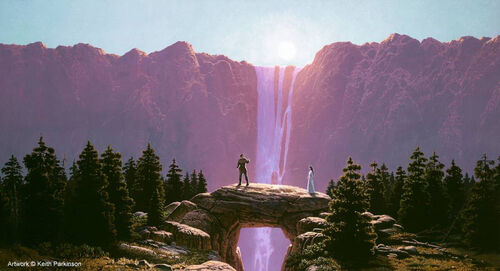When I pick up a book, it feels to me like I’m holding a
treasure in my hands, its hundreds of pages containing an accumulation of
someone else’s imagination, creative thoughts and ideas, emotional wellsprings,
currents, and tides. Before I even lift the cover I feel it, as if the magic
aura of the story has seeped out from between the pages and osmosed through the
skin of my hands into my body. Though I sometimes have similar types of
experiences when I hold other forms of story, such as movies or video games,
none is nearly as significant as what comes from holding a book.
A book uses only words, which is both its greatest drawback
and its greatest strength. Words cannot show you with sights or sounds what is
happening like a movie does, but they can paint the picture in your
imagination. Words are not restricted to these two perceptions, but can present
touch, smells, thoughts, and even emotions, not only in the meanings of the
words, the sentences and contexts they are found in, but also at a deeper level
in the subtleties between the lines. The specific sounds chosen can set the
stage, the mood molded by writer’s word the way a melody breathes, or rises, or
roars like a raging typhoon whipping through your core. Words are the single
major tool books can use, and the best books wield that tool with the power to
shake the earth.
The stories that work best as books are stories that focus
on the emotions, thoughts, and experiences of the main characters, as words can
craft an empathetic bond between reader and character like nothing else can—not
even music. Medieval fantasy works very well in the form of books, partly
because books would have been the only medium available to record the stories
in the time period which they take place, and partly because fantasy is usually
built upon a system of magic, which is founded in an emotional-spiritual
basis.
 |
| Cover art of Wizard's First Rule, by Terry Goodkind |
I have found some of my favorite, most emotionally-touching,
thought-inspiring stories in books, namely The
Kingkiller Chronicle by Patrick Rothfuss, and Mistborn and The Stormlight
Archive by Brandon Sanderson. I also enjoy many of the Star Wars Legends books that take place after the movies. As a
child, I read many 100-200 page books, including young adult versions of
classics like 20,000 Leagues Under the Sea
by Jules Verne and The Time Machine
by H. G. Wells. I have also found gems like The
Phantom Tollbooth by Norton Juster, and The
Hitchhiker’s Guide to the Galaxy by Douglas Adams. Books have given me so
much pleasure, joy, and food for thought that I have made it a goal of my life
to publish at least a few science fiction novels, built upon the knowledge I
have gained training as a scientist. Though a picture may be worth a thousand
words, a book is worth a thousand pictures.
Choosing a Canvas:
Books
Video Games
Choosing a Canvas:
Books
Video Games


No comments:
Post a Comment